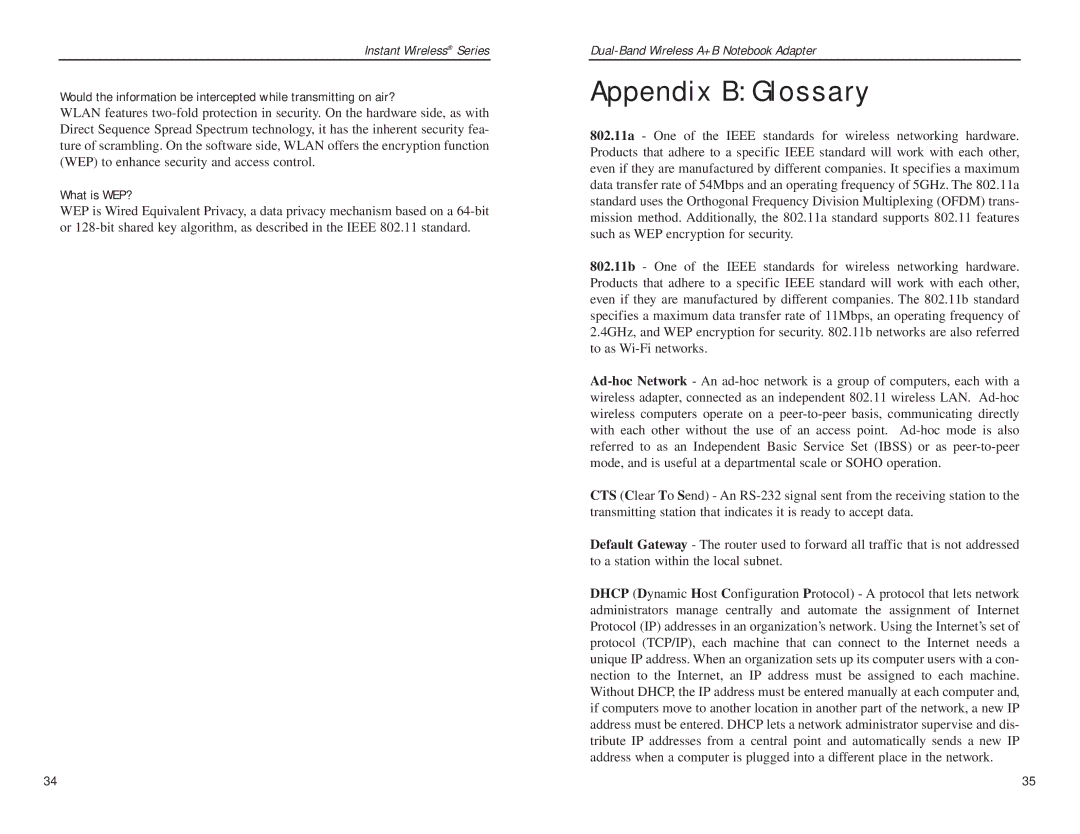Instant Wireless® Series
Would the information be intercepted while transmitting on air?
WLAN features
What is WEP?
WEP is Wired Equivalent Privacy, a data privacy mechanism based on a
Appendix B: Glossary
802.11a - One of the IEEE standards for wireless networking hardware. Products that adhere to a specific IEEE standard will work with each other, even if they are manufactured by different companies. It specifies a maximum data transfer rate of 54Mbps and an operating frequency of 5GHz. The 802.11a standard uses the Orthogonal Frequency Division Multiplexing (OFDM) trans- mission method. Additionally, the 802.11a standard supports 802.11 features such as WEP encryption for security.
802.11b - One of the IEEE standards for wireless networking hardware. Products that adhere to a specific IEEE standard will work with each other, even if they are manufactured by different companies. The 802.11b standard specifies a maximum data transfer rate of 11Mbps, an operating frequency of 2.4GHz, and WEP encryption for security. 802.11b networks are also referred to as
CTS (Clear To Send) - An
Default Gateway - The router used to forward all traffic that is not addressed to a station within the local subnet.
DHCP (Dynamic Host Configuration Protocol) - A protocol that lets network administrators manage centrally and automate the assignment of Internet Protocol (IP) addresses in an organization’s network. Using the Internet’s set of protocol (TCP/IP), each machine that can connect to the Internet needs a unique IP address. When an organization sets up its computer users with a con- nection to the Internet, an IP address must be assigned to each machine. Without DHCP, the IP address must be entered manually at each computer and, if computers move to another location in another part of the network, a new IP address must be entered. DHCP lets a network administrator supervise and dis- tribute IP addresses from a central point and automatically sends a new IP address when a computer is plugged into a different place in the network.
34 | 35 |
